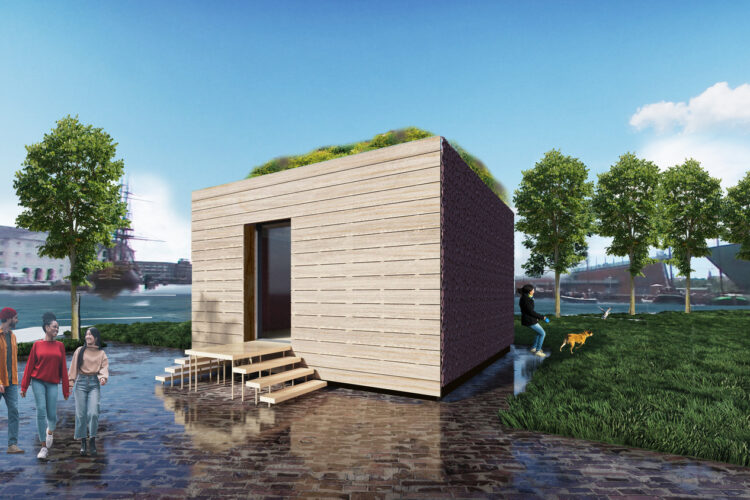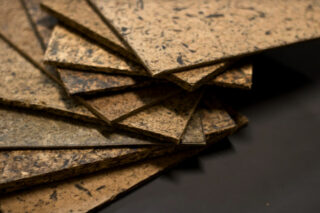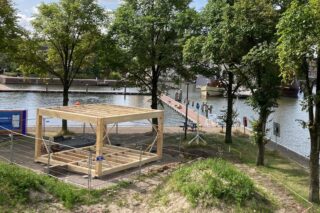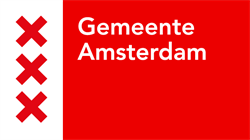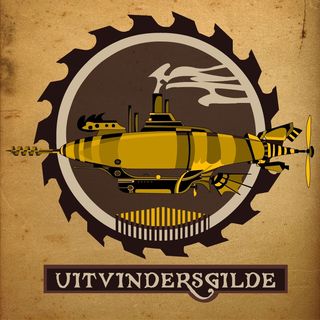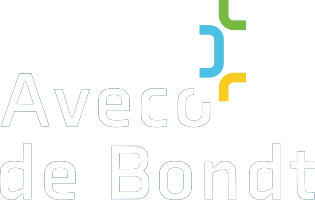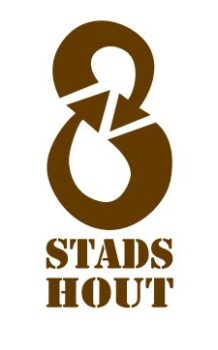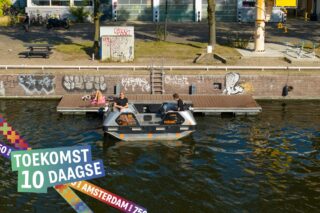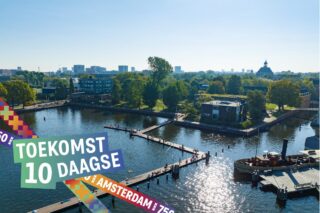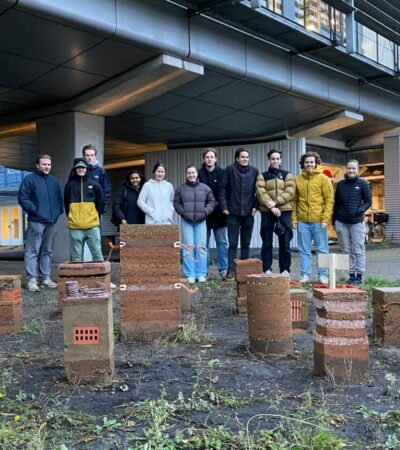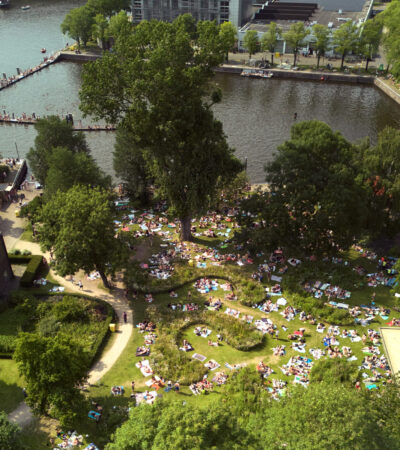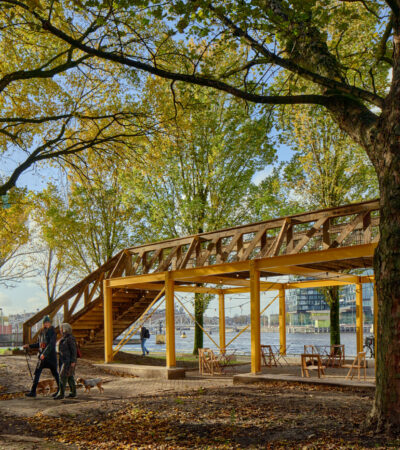The pavilion is made from a combination of new bio-based materials that are still in development and materials that are already on the market. The project offers producers the chance to test their bio-based product in combination with solutions made by other producers in a single facade system.
South-east side
The south-east side of the pavilion has a removable, bio-based facade system. Testers on this side are using wood, insulation made from chalk hemp and panels made from agricultural fibres and seaweed. These materials effectively replace products like cement and plaster which are used in many homes. The bio-based materials create a good indoor climate through natural ventilation and, moreover, they are easy to put together and take apart. This is called a modular system.
North-west side
The facade system on the north-west side is partly composed of bio-based materials. At this site we are testing parts made from, among others, reed fibre and wood. The insulation on this side is made of flax. The facade is noteworthy because it provides habitats for birds and insects: it contains holes that provide access to nesting areas and insect houses.
Roof
The green roof is also modular. This roof system can transform an ordinary grey roof into a light-weight green roof with solar panels or other sustainable installations like heat pumps. The green roof cools homes, increases solar panel yields and is part of the city’s ecosystem.
